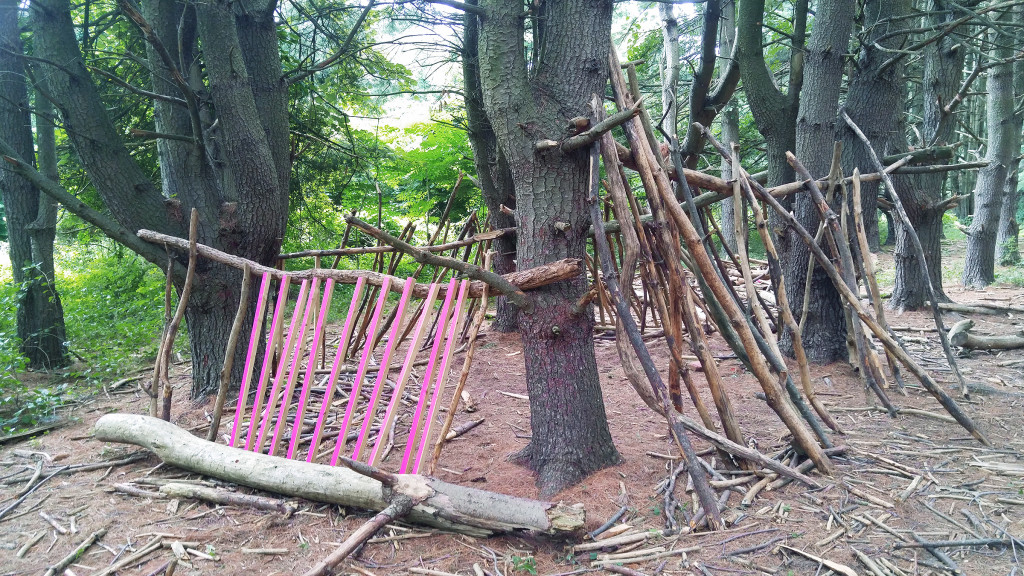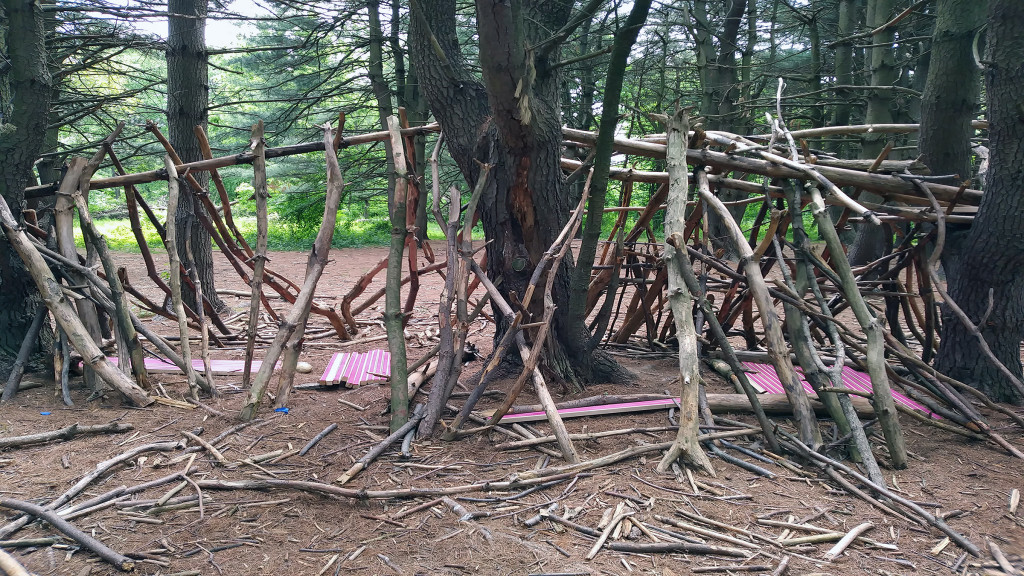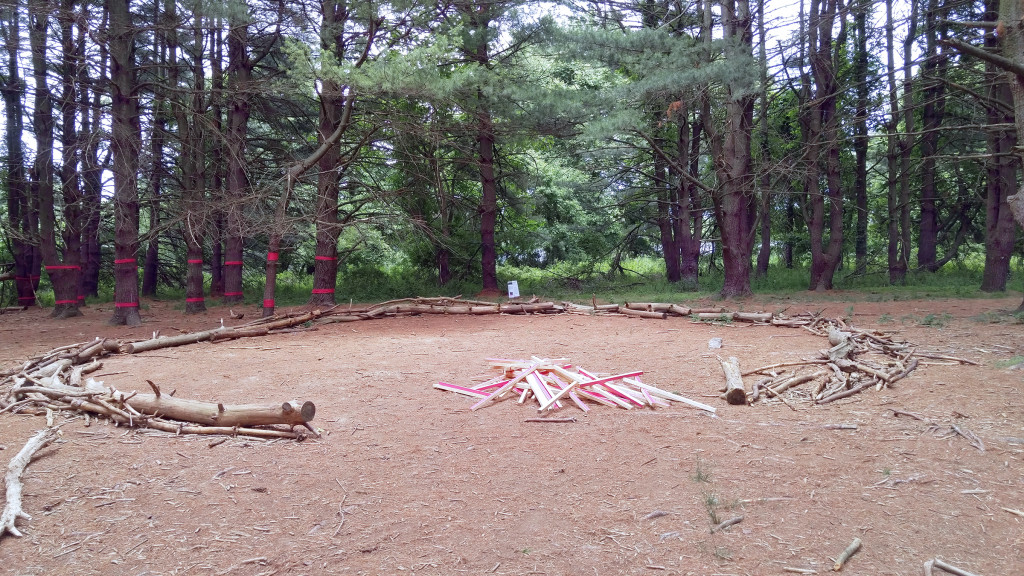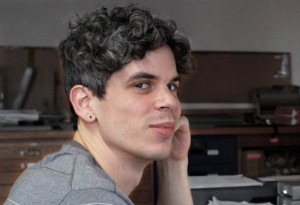
by Aaron Asis, Making in Place artist
Back in May, Sau Pines was created to celebrate the spirit of the Pine Grove — as part of the Schuylkill Center for Environmental Education’s Making in Place exhibition — which featured the work of 14 different Art in the Open artists.
The installation itself consisted of a series of visual tree wraps to highlight some of the unique environmental characteristics of the Pine Grove. A series of matching colored timbers were also distributed throughout the Pine Grove to activate visitor interaction within the context of the broader landscape of the Schuylkill Center throughout the season. And the universal consensus is that the work was both well received and well used all summer!
“During Olympics Week, the 6 & 7s and 8 & 9s had a fort building competition, using the art to create structures judged by the counselors on aspects such as durability and aesthetic. The pink pieces were useful and added color to the otherwise earth toned forts.” -Summer camp counselor
However, it is important to note that Sau Pines was also created as a bit of an experiment, to explore considerations that reside somewhere between environmentalism and interactive installation. In it’s conception the installation was designed to encourage interaction as a means of engagement, but it was always the hope that the installation might also inspire curiosity as a means of inquiry and (subsequent) increase in environmental awareness. Four months later, it has been a delight to see, talk, and hear about the activity in the Pine Grove this summer and to witness our hopes, validated through testimonials from summer camp staff at the Center like these…
“The kids absolutely loved using the [Sau Pines] sticks to build. They were continuously imaginative in their play…and would often ask what the pink bands around some of the trees meant.”
“The kids have been playing with the piece in Pine Grove all summer. They sometimes ask about the art installations (the doorway, tent structure and decorative rocks under the trees), including the one in Pine Grove. We always tell them that the artist is trying to make them think about the way that we treat the Earth.”
 As result of all this feel-good reading, I am extremely pleased to write that the Sau Pines numbers will remain in the beloved Pine Grove though the end of the year, to continue to inspire playful creation and ongoing inquiry and engagement!
As result of all this feel-good reading, I am extremely pleased to write that the Sau Pines numbers will remain in the beloved Pine Grove though the end of the year, to continue to inspire playful creation and ongoing inquiry and engagement!
A more personal note, this project resonated very closely with my own creative mission which tends to focus on creating work to facilitate access, increase awareness, and highlight lesser-appreciated environs — because at the end of the day, these characteristics are at the root of stewardship and these sensibilities are at the core of all things related to environmentalism and general environmental considerations.

Thank you the Schuylkill Center and to everyone who worked to ensure Making in Place would be such a success. I am grateful for having had this opportunity to explore the potential of art to incite creative interest, inspire environmental inquiry, and increase general awareness in the Pine Grove.
About the author
Aaron Asis was born and raised in New York City and spent most of his childhood exploring its neighborhoods, its people, and its streets. Over the years, the se explorations have escalated from an experiential curiosity in urban conditions to an intellectual fascination in promoting spatial awareness within them. This fundamental intrigue has become the foundation for his creative work, concentrated on the understated aspects of our built environment and using art to highlight various relationships, within an everyday urban context — at the intersection of city agency, community engagement, and public access.
se explorations have escalated from an experiential curiosity in urban conditions to an intellectual fascination in promoting spatial awareness within them. This fundamental intrigue has become the foundation for his creative work, concentrated on the understated aspects of our built environment and using art to highlight various relationships, within an everyday urban context — at the intersection of city agency, community engagement, and public access.
